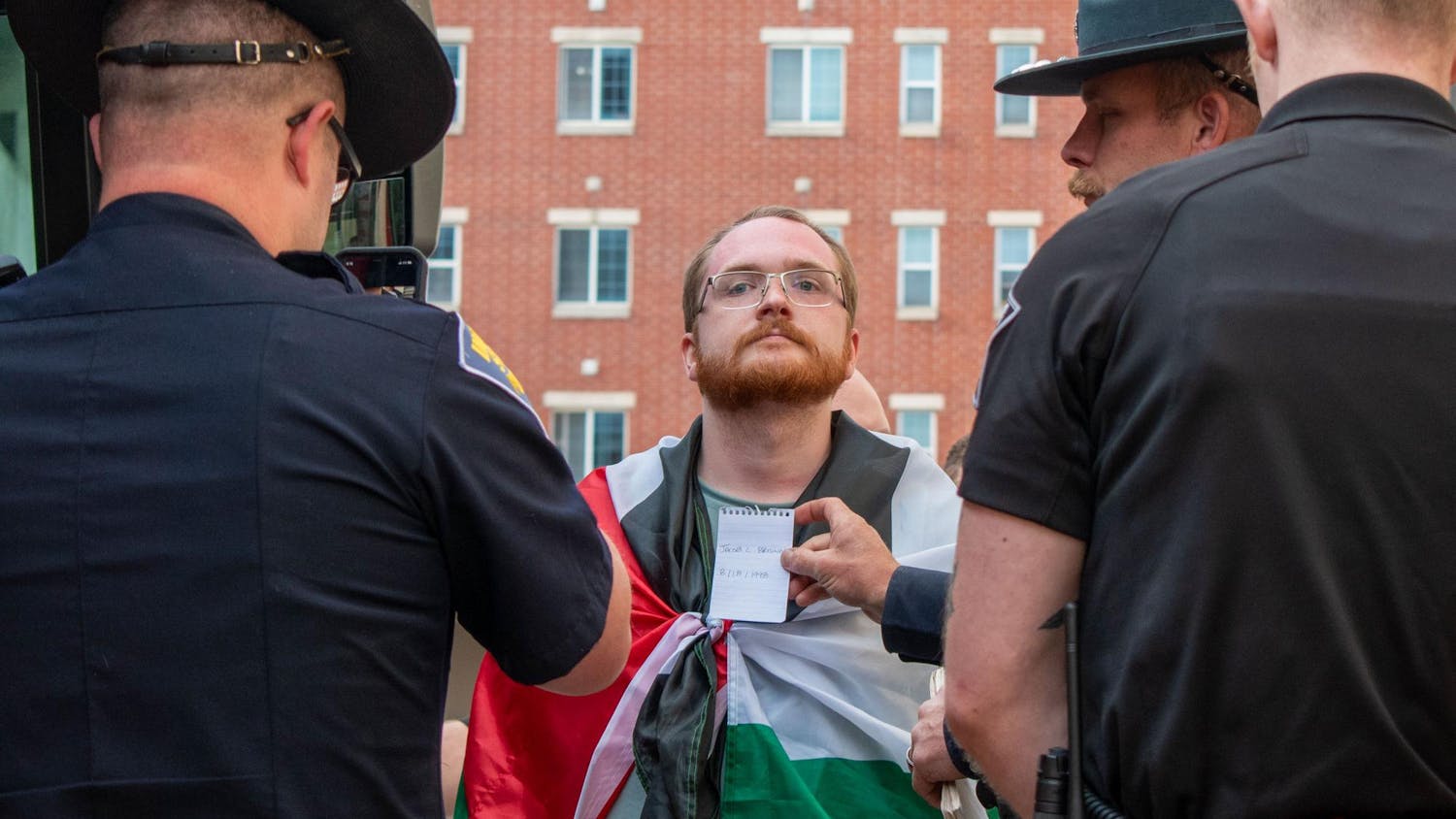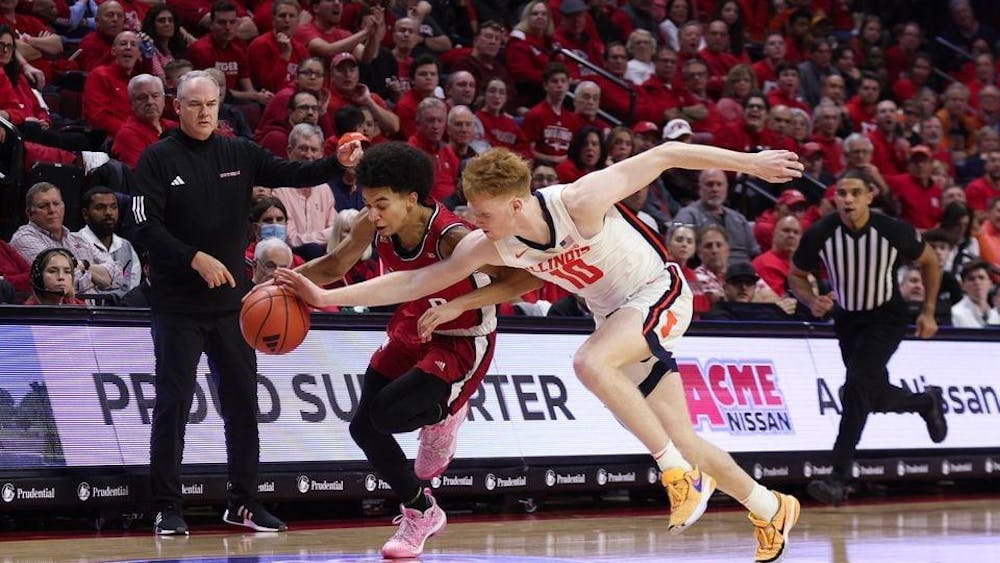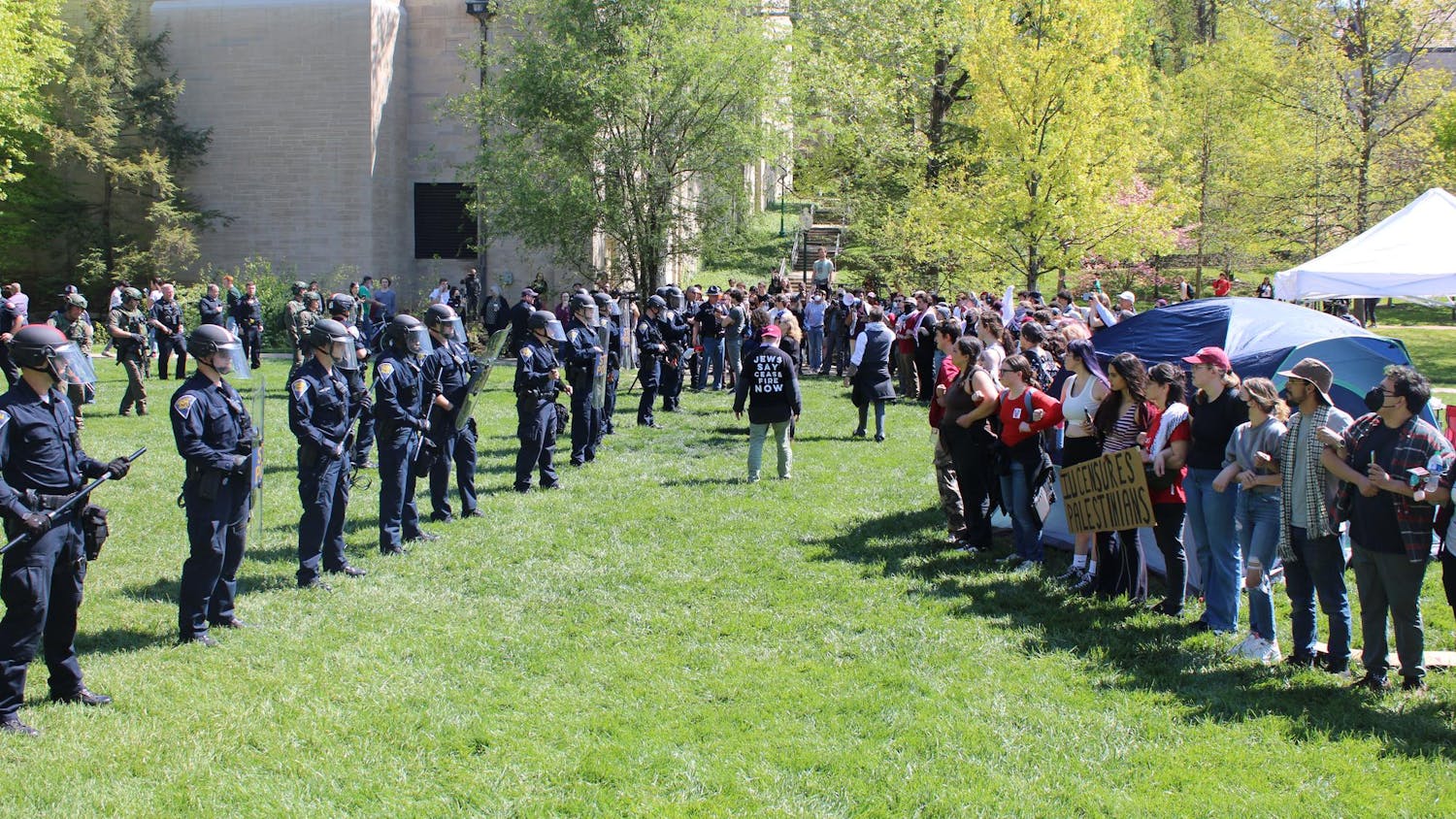The social media clicks, comments and shares, however, were real.
November 21, 3:09 p.m. “There goes small town down the drain.”
November 21, 7:19 p.m. “Yall better teach your women to shoot first and ask questions later.”
November 24, 11:04 a.m. “Going to be interesting to see what kind of shithole this town will turn into. 5 years from now unemployment? Crime rate?”
If any of these Facebook users had clicked on the link, they would have quickly been informed that the article wasn’t real.
Had they clicked on the link before pressing share and typing racist comments, the web page would have told them they had been pranked by Spencer native Steve Sears.
“With Facebook and one click or share, it’s so easy for misinformation to spread,” Sears, 24, said. “In this instance, it was totally unintentional.”
What he said had begun as an innocent joke between friends spread more quickly than Sears ever imagined, rattled the town of Spencer and caused Sears’ inbox to flood with messages.
This example of unfiltered sharing, hateful reactions and pranks gone awry is indicative of the more dangerous side of social media, experts said.
“One of the things about social media is how we share on it so easily,” IU Media School assistant professor Jessica Gall Myrick said. “These share buttons encourage us to share, so we do it fast and we often do it without thinking.”
Myrick studies the effect of emotions on media processes. She said people are often multitasking while using social media and might not fully consider what they’re doing.
“A media story can evoke our emotions in just a title,” she said. “Your emotions motivate you to take action and the easiest action to do is to share.”
Nearly 800 people shared Sears’ post, which had been created with the website shareonfb.com. The website asks for only a photo, a headline and a tagline to generate a fake news clip for Facebook.
In the time it was online, Sears’ article was viewed about 10,100 times.
His friend, the person the prank was actually meant for, thought it was funny.
Other people did not.
“I believe this post was made just to elicit hatred and divisiveness and create a rumor that will hurt the town,” Dean Bruce, a town board member for 16 years, wrote on the Town of Spencer Facebook page. “I don’t think there’s any place for this sort of thing and have contacted Steve Sears to take this down.”
Sears told Bruce he couldn’t take it down; he didn’t control the site.
Bruce told him he was being “obtuse.”
“If you’re not going to take it down, please let me know so I can move on to other actions,” he wrote to Sears in a Facebook message.
Sears asked him what he meant by that.
“End of conversation,” Bruce replied.
Looking back, Bruce regrets how he handled the situation.
“Maybe I should have been more responsible myself,” he said. “For one thing, Facebook is not the best place in the world to have those conversations. It’s just way to easy to post things that you didn’t want to or have things misinterpreted.”
Myrick said many people who post particularly harsh comments online wouldn’t be likely to say those things in other contexts.
“You don’t think about it because you don’t see the faces of the people who are reading your posts,” she said. “You’re not interacting with them as human beings so we lose some of that instant feedback.”
Eventually the site was asked to take down the link, and they complied.
“The problem got out of hand and when it starts to affect the community and the creator (has) been threaten(ed) for it we have to step in to protect our users and ourselves,” representatives of shareonfb.com wrote in a Facebook chat with the IDS.
Not all of the feedback was negative. Some people commented the post was a good joke, some said they wished the headline had been true, some even followed Sears’ example.
A slew of fake headlines featuring places in Indiana began to cover the site.
“Brownsburg set to be the first Indiana town to take ...”
“Bedford, Indiana to take in 341 Syrian refugees.”
“Seelyville set to be the first Indiana town to accept ...”
“Martinsville, Indiana refuses Governor Pence’s ...”
Sears said although the unexpected reaction has been stressful, he’s happy to have been given a platform to generate conversation on real, important issues.
He has been in touch with Exodus Refugee, a resettlement agency that is working to sue Mike Pence for an unlawful stance on Syrian refugees. He said he hopes the media attention generated through his post will raise awareness about the organization and their efforts.
He said he also hopes people learn to be more conscientious of what they are both reading and writing online.
“It’s not that people have to agree, but you don’t have to overreact and become violent to the opposition,” he said. “We need to address this hate and ignorance in our community.”
Though he said he’s done with fake posts for now, he does have one more headline in mind.
“Necromancer raises army of undead beneath Spencer, Indiana.”





